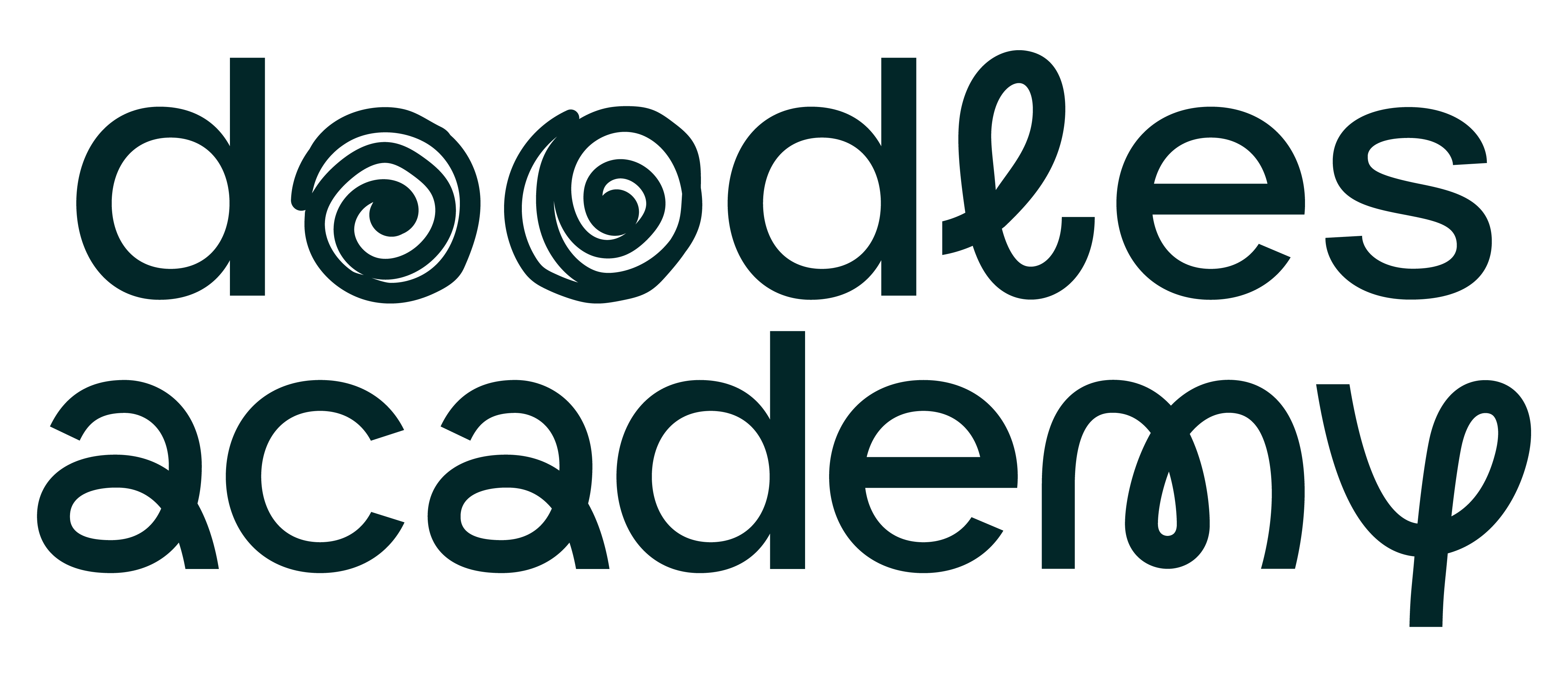Back to: Dream House (lower grades)
Overview:
In this lesson, artists are introduced to the importance of looking and pay close attention to the nuances of the things that they are drawing. They do this through ‘Blind Contour Drawing’, where they draw without looking at the paper, as well as ‘Blind Bag’ drawing were they draw what they feel rather than what they see.
Students will be able to:
- understand that paying close attention to what they are drawing and using their eyes to closely observe an object’s particular details is important to drawing.
-
define ‘contour line’.
Setup:

Students will be working in groups.

Have materials set up in a way that is easy to pass out, see, and select from.
Materials:
- Pencils
- Copy Paper
- Paper Bags (1 per student, any size)
- Misc small objects
Media:
- N/A
Handouts & Photocopies:
- N/A
NOTE: The objects can be anything—students will feel them blindly and draw what they feel. Pencils, feathers, books, etc. Anything that can fit into the bags you choose is fair game.
Lesson 1
10M, INSPIRATION IMAGE
LOOK AND DISCUSS AN ART PIECE THAT INTRODUCES SOME OF THE LESSON CONCEPTS
Project the inspiration image where students can see it. Give students a moment to study it silently, then begin a brief discussion with the phrase, “What can we find?”. Paraphrase what students say for the benefit of the class, being careful to remain neutral, then ask “What else can we find?”. Alternately, allow them to draw or write what they notice on a blank piece of paper or in a sketchbook.
- Beverly Buchanan, Miss Tiny Aiken’s Shack, 1987
- An African-American artist whose works include painting, sculpture, video, and land art. Buchanan is noted for her exploration of Southern vernacular architecture through her art (more on wikipedia)
Note on using the information above: As your students participate in a conversation around this artwork, it may occasionally be helpful to provide them with additional or contextual information. This information can and should be imparted at the teacher’s discretion.
The point of this discussion time is to have students learn and add onto each other’s thoughts. By remaining neutral and simply repeating what students say you allow students to do the heavy mental lifting and also create an environment where there is no wrong answer, fostering creativity and mental risk-taking.
5M, INTRODUCTION VIDEO
WATCH THE INTRODUCTION VIDEO & CHECK FOR UNDERSTANDING
Check for understanding by asking, “Who was listening closely that can sum up what we are doing today?” Make sure that student artists can list all the steps and clarify anything that needs clarifying.
Instructions
- Make sure student artist understand ‘contour’ (a contour is the outline of something), then have students repeat the word ‘contour’ after you.
10-15M, WORKTIME
FOCUS ON STUDENTS CLOSELY OBSERVING DETAILS
Students will work independently & with partners on their blind contour drawings. They will start out working individually, but there will be giggles and laughter. Expect this to be a silly lesson. Compliment the kids who don’t have a perfect drawing—the messier it is the more it means they aren’t looking at their paper! At this point, have a brief class discussion about what they noticed about their hand that they wouldn’t have noticed otherwise. Have them then move on to drawing their neighbor’s face.
At this point, the students should be having a lot of fun and enjoying themselves, but the focus of the conversation should be on the extra details they have found by looking closely, such as curved lines, fine hairs, the shape of fingers, and so on.
10M, ADDITIONAL WORKTIME
FOCUS ON STUDENTS CLOSELY FEELING DETAILS
Allow the blind contour drawing to run it’s course. If students need a second activity, stop the class and demo this as the second activity: DEMO BLIND BAG: reach into a bag, feel an object, and draw it based on what you feel. Pair students so that their neighbor can choose the object that they will draw blindly.
The focus of the conversation should be how they are representing what they are feeling, such as odd shapes and texture.
5-10M, CLEAN-UP/PRESENTATIONS
STUDENTS DISCUSS WHAT THEY LEARNED FROM THIS EXERCISE
Lead the class in a discussion, asking “what did you learn today?” You can have the students turn and talk before having a whole-group conversation, or have them reflect by writing down their thoughts. Try to navigate the conversation so that they recognize that even though the drawings looked funny, they were observing things that they wouldn’t have seen with a casual glance.
Depending on the teacher’s style of classroom management, it might be helpful to only choose and train a few kids to clean. The rest of the class can be busy with the presentation. Make sure to train these helpers well in advance so that you aren’t left with a messy room.
Clean-up times will vary with materials; get to know your class and allow 5-10 minutes depending on how efficient they are and whether or not the material was messy.
ANTICIPATED PROBLEMS
-
Students might have a hard time letting go of a perfect drawing. Discourage this by creating an air of levity and laughing with students about their ‘silly’ drawings while also pointing out the different things they noticed by studying so carefully. Tell students that for this exercise, the LESS it looks like the actual subject, the better!
EARLY FINISHERS
Allow students to make multiple drawings of each exercise.
This project is free to access, but after the first lesson, you will have to create a free account and enroll in the course. After you create an account and enroll, the project can be accessed from the ‘artroom’ tab at the top of the page.
